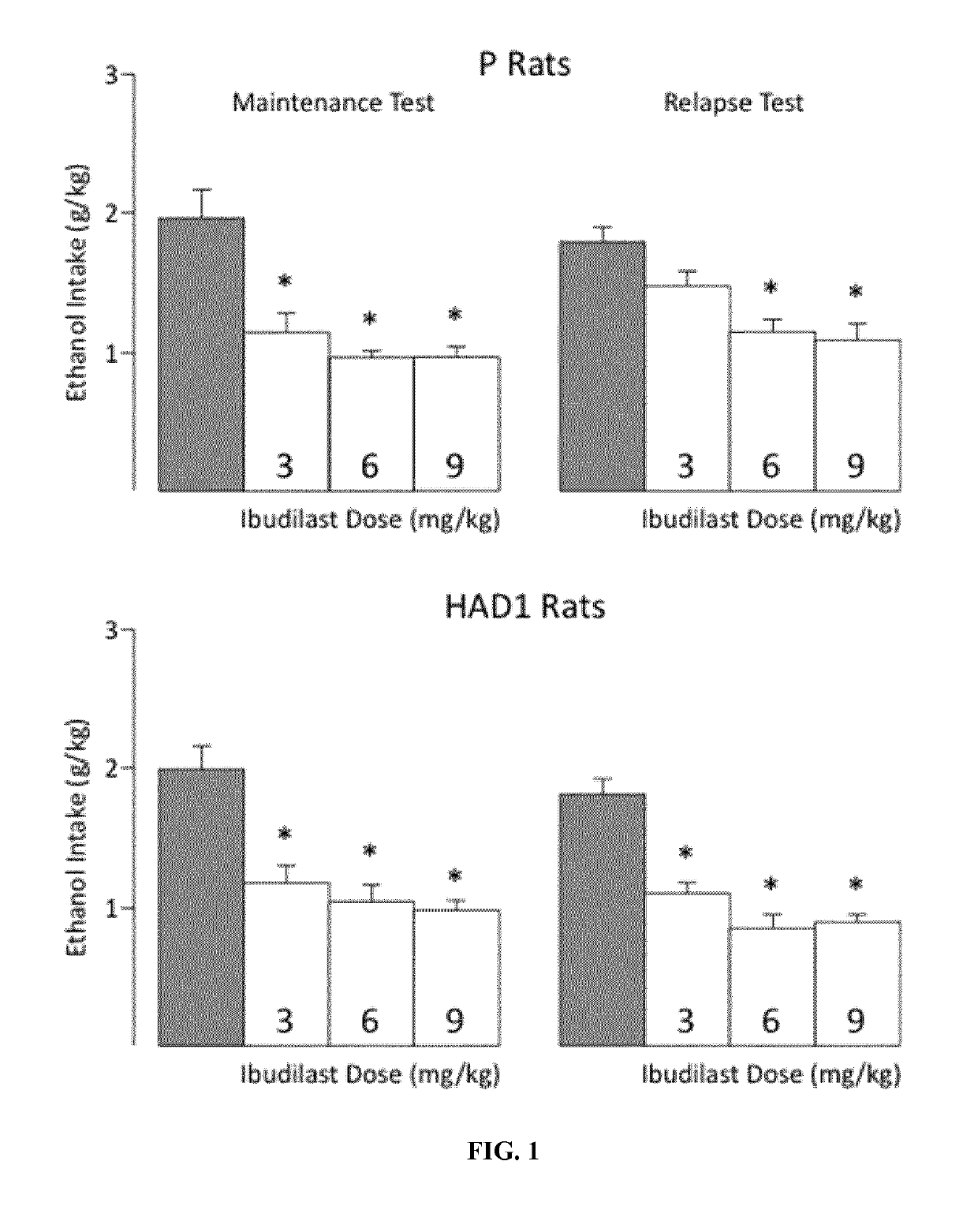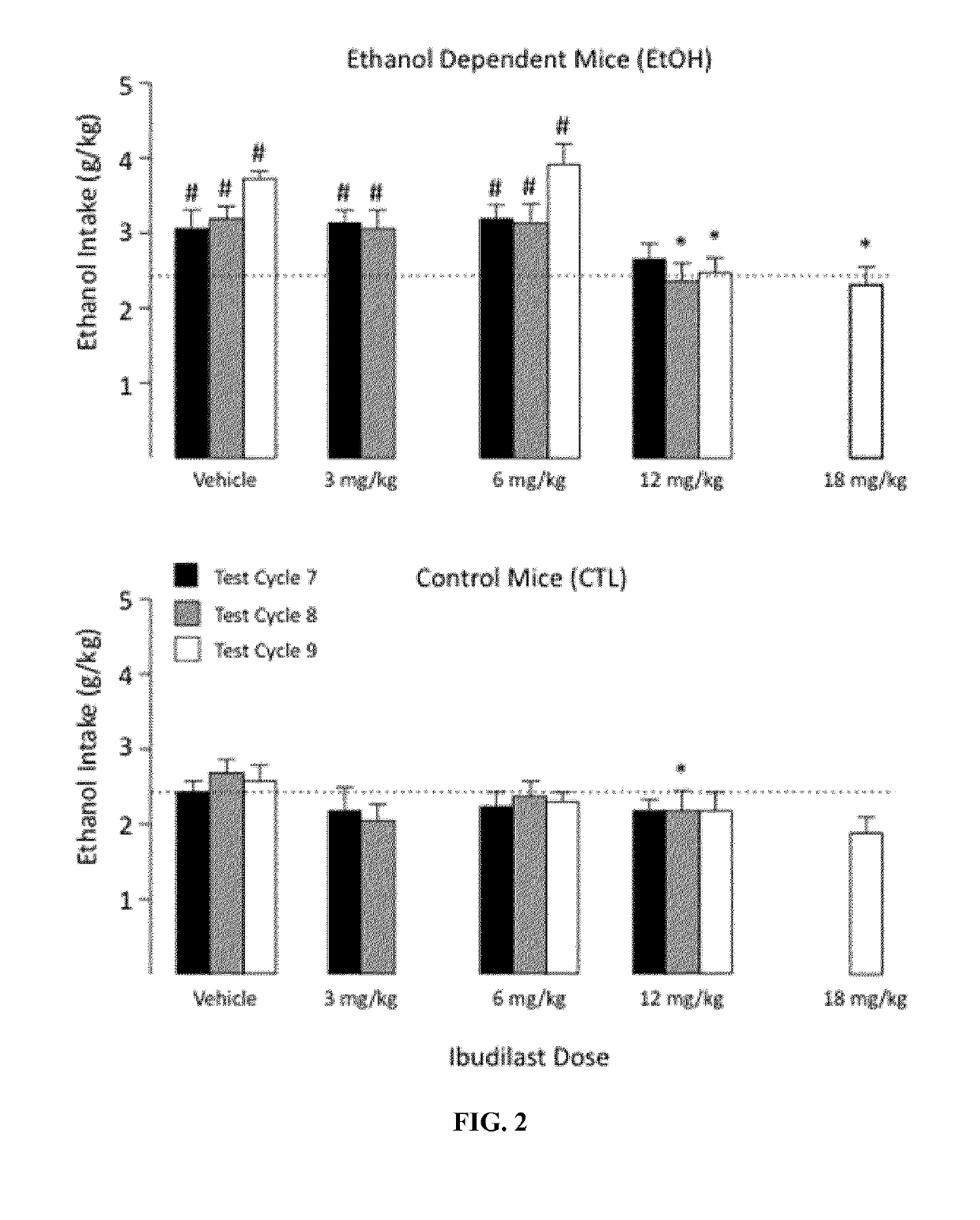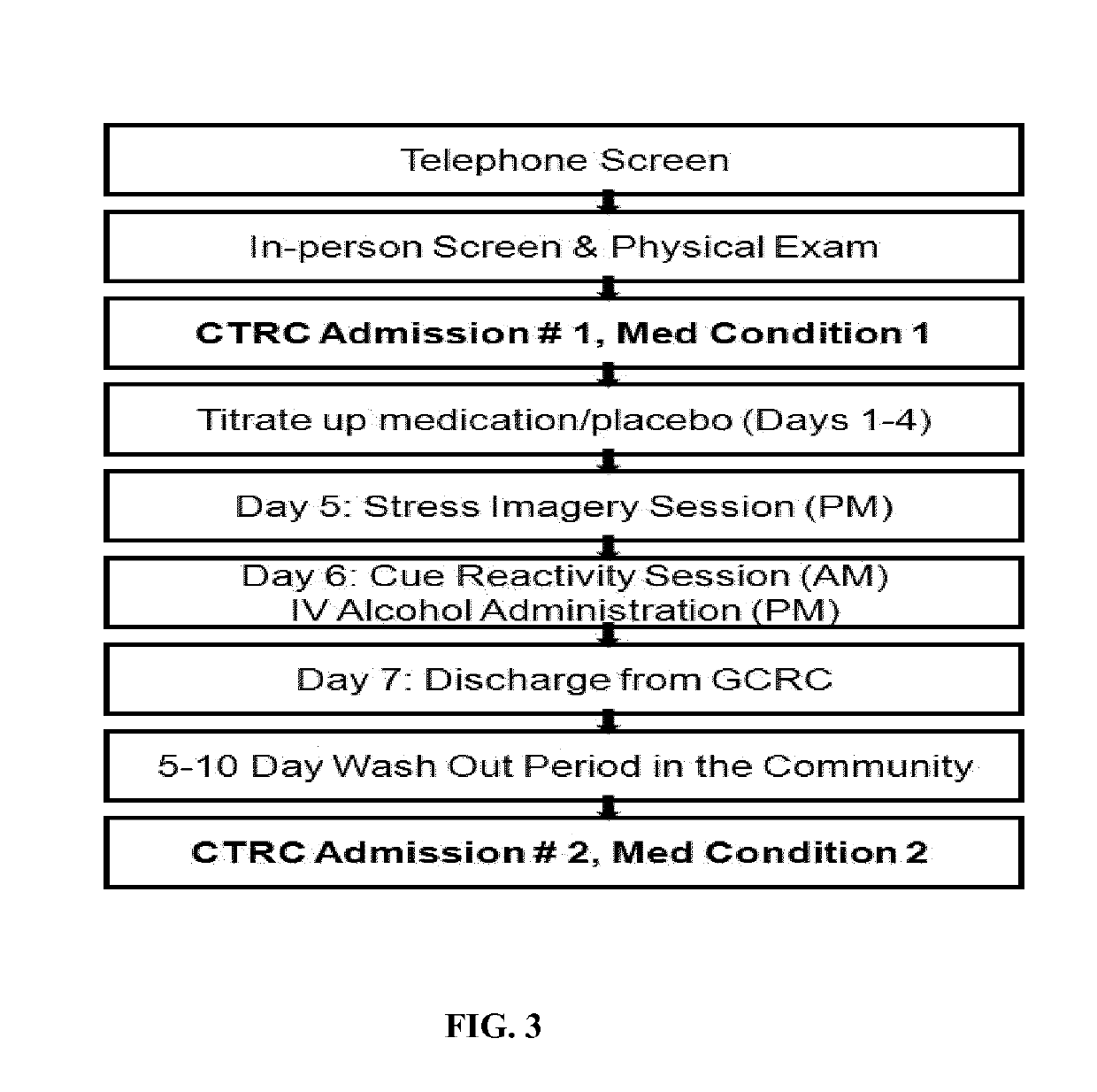Treatment of alcoholism and depression and/or dysphoric mood using ibudilast
a technology applied in the field of treatment of alcoholism and depression and/or dysphoric mood using ibudilast, can solve the problems of drug effects that are only modestly effective, drug effects that are not conducive to recovery, and side effects of therapeutic agents
- Summary
- Abstract
- Description
- Claims
- Application Information
AI Technical Summary
Benefits of technology
Problems solved by technology
Method used
Image
Examples
example 1
Evaluation of Ibudilast as a Therapeutic Agent for Decreasing Voluntary Alcohol Consumption in Mice
example 1-a
[0050]The ability of ibudilast (MN-166) to decrease voluntary ethanol consumption, under blind testing conditions, in selectively-bred alcohol-preferring (P) and high-alcohol-drinking (HAD1) rats and in a mouse model of ethanol dependence was examined. While each model is characterized by elevated alcohol intake, drugs such as quetiapine and levatiracetam do not selectively reduce ethanol drinking in these models.
[0051]To perform the study, adult male P and HAD1 rats were randomly assigned to receive one of the following four doses of ibudilast—0 mg / Kg, 3 mg / Kg, 6 mg / Kg, or 9 mg / Kg with eight rats assigned to each dose. Each dosing group was balanced to average a 2 h / day ethanol (15% v / v) intake. Water was concurrently available to the rats and Mazola corn oil was used as the vehicle.
[0052]The study was divided into four test phases. In the maintenance test phase rats in the treatment group were injected ibudilast subcutaneously (2 mL / kg s.c.), using standard solutions that deliver ...
example 1-b
[0057]In a separate study, adult male C57BL / 6J mice were used to evaluate ibudilast as a therapeutic for the treatment of alcohol dependence. Two groups of mice were used for the study. Mice in the first group were trained to drink ethanol using a 2 h / day free-choice (15% v / v ethanol) drinking procedure (ethanol dependent (EtOH) mice), while mice in the second group were provided water and served a control (ethanol nondependent (CTL)) mice. Both the ethanol dependent and ethanol non-dependent groups had equal number of mice (N=37-38 / group).
[0058]Mice in the alcohol dependent group were then exposed to chronic intermittent ethanol (CIE) vapors for 16 hr / day over four days. After a 72 hours forced abstinence period, the ethanol dependent mice were again permitted access to ethanol for 2 hours each day over a 5 consecutive test days. This pattern of chronic intermittent ethanol vapor exposure for four consecutive days followed by forced abstinence and a five day ethanol access test per...
PUM
| Property | Measurement | Unit |
|---|---|---|
| Mass | aaaaa | aaaaa |
| Mass flow rate | aaaaa | aaaaa |
| Mass flow rate | aaaaa | aaaaa |
Abstract
Description
Claims
Application Information
 Login to View More
Login to View More - R&D
- Intellectual Property
- Life Sciences
- Materials
- Tech Scout
- Unparalleled Data Quality
- Higher Quality Content
- 60% Fewer Hallucinations
Browse by: Latest US Patents, China's latest patents, Technical Efficacy Thesaurus, Application Domain, Technology Topic, Popular Technical Reports.
© 2025 PatSnap. All rights reserved.Legal|Privacy policy|Modern Slavery Act Transparency Statement|Sitemap|About US| Contact US: help@patsnap.com



